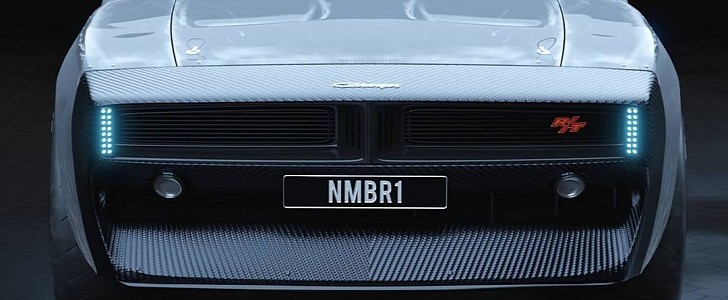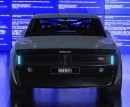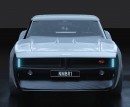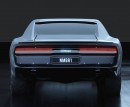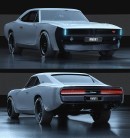Few iconic cars can rival the 1969 Dodge Charger when it comes to how the audience of the machine has played with the original over the years. Of course, this also means that attempting to pull such a stunt these days takes quite a bit of courage, even when talking about a rendering rather than a real-life build.
We are now looking at one of the weekend adventures of Marcell Sebestyen, an aficionado who knows a thing or two about designing cars, as his role of Senior Exterior Designer for Kia Motors Europe shows.
Sebestyen is not at his first walk down Classic Americana lane, but this Mopar project is his most elaborate "doodle" to date (you'll find more details on the artist's pixel journey in the description of the Instagram posts below).
When Dodge introduced the second-generation Charger, which came for the 1968 model year, the all-luxury image of the Gen I was traded for a more dynamic approach and this was obviously reflected in the styling of the big coupe.
Well, the said designer chose to replace one of the elements that made the difference mentioned above, namely the scallops on the sides of the car, with the shapes found on the modern, four-door Charger.
And while the scallops on the hood seem to be intact, we can't say the same about what lies in front of the latter. Sure, the memorable '69 grille is there. But the vertical LED light clusters on its side are nowhere near as radical as the carbon conversion of the front end, air-dam-gone-full-apron included.
We find a similar carbon transformation at the back, with the modern fascia and the LED taillights are contained by the classic sheet metal.
Want a topic to start a debate among your car buddies? The illuminated Charger emblems, which can be found at both ends of the machine, or the rear window spoiler should have you covered.
Sebestyen is not at his first walk down Classic Americana lane, but this Mopar project is his most elaborate "doodle" to date (you'll find more details on the artist's pixel journey in the description of the Instagram posts below).
When Dodge introduced the second-generation Charger, which came for the 1968 model year, the all-luxury image of the Gen I was traded for a more dynamic approach and this was obviously reflected in the styling of the big coupe.
Well, the said designer chose to replace one of the elements that made the difference mentioned above, namely the scallops on the sides of the car, with the shapes found on the modern, four-door Charger.
And while the scallops on the hood seem to be intact, we can't say the same about what lies in front of the latter. Sure, the memorable '69 grille is there. But the vertical LED light clusters on its side are nowhere near as radical as the carbon conversion of the front end, air-dam-gone-full-apron included.
We find a similar carbon transformation at the back, with the modern fascia and the LED taillights are contained by the classic sheet metal.
Want a topic to start a debate among your car buddies? The illuminated Charger emblems, which can be found at both ends of the machine, or the rear window spoiler should have you covered.
